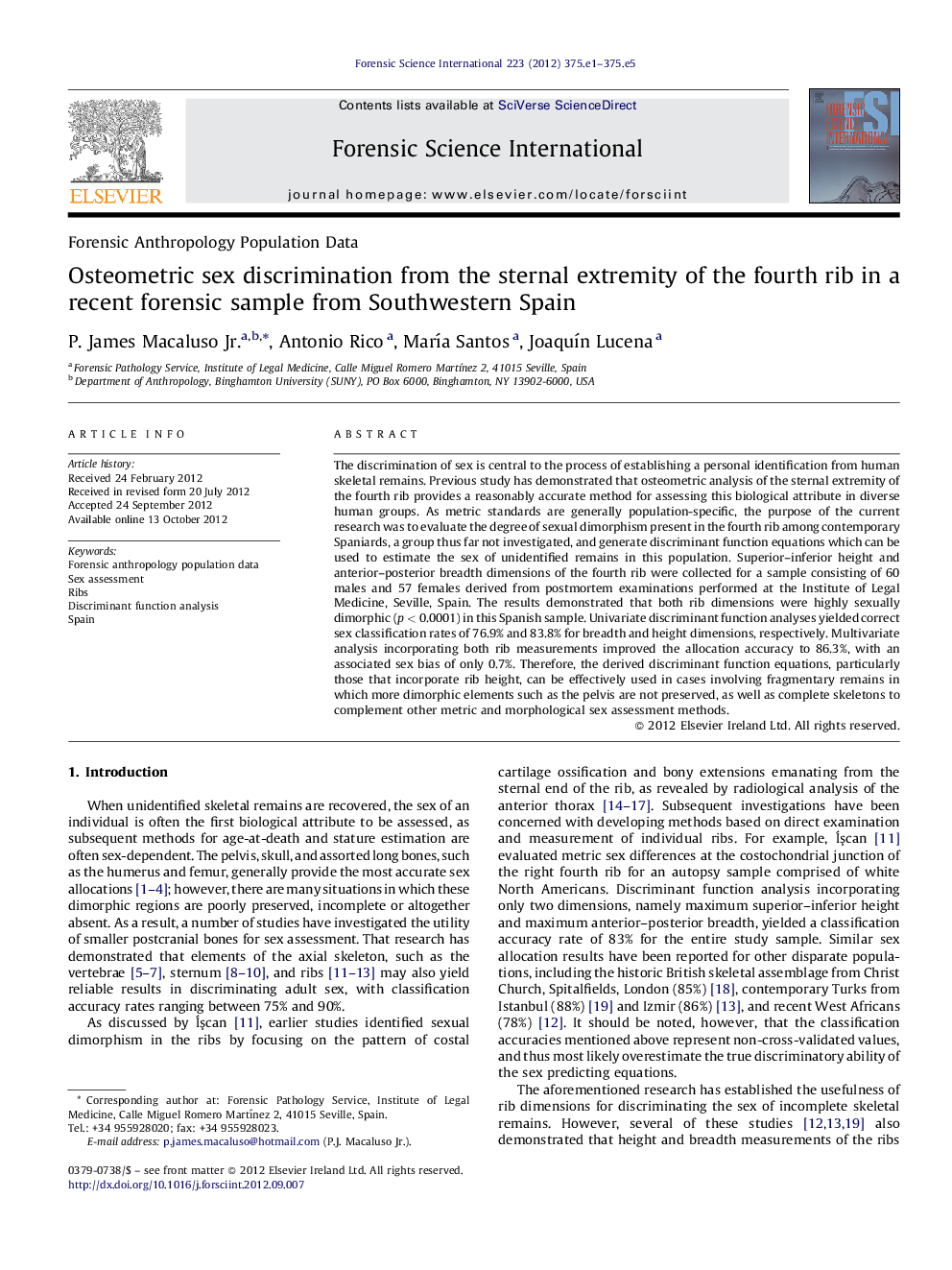| Article ID | Journal | Published Year | Pages | File Type |
|---|---|---|---|---|
| 96395 | Forensic Science International | 2012 | 5 Pages |
Abstract
The discrimination of sex is central to the process of establishing a personal identification from human skeletal remains. Previous study has demonstrated that osteometric analysis of the sternal extremity of the fourth rib provides a reasonably accurate method for assessing this biological attribute in diverse human groups. As metric standards are generally population-specific, the purpose of the current research was to evaluate the degree of sexual dimorphism present in the fourth rib among contemporary Spaniards, a group thus far not investigated, and generate discriminant function equations which can be used to estimate the sex of unidentified remains in this population. Superior-inferior height and anterior-posterior breadth dimensions of the fourth rib were collected for a sample consisting of 60 males and 57 females derived from postmortem examinations performed at the Institute of Legal Medicine, Seville, Spain. The results demonstrated that both rib dimensions were highly sexually dimorphic (p < 0.0001) in this Spanish sample. Univariate discriminant function analyses yielded correct sex classification rates of 76.9% and 83.8% for breadth and height dimensions, respectively. Multivariate analysis incorporating both rib measurements improved the allocation accuracy to 86.3%, with an associated sex bias of only 0.7%. Therefore, the derived discriminant function equations, particularly those that incorporate rib height, can be effectively used in cases involving fragmentary remains in which more dimorphic elements such as the pelvis are not preserved, as well as complete skeletons to complement other metric and morphological sex assessment methods.
Related Topics
Physical Sciences and Engineering
Chemistry
Analytical Chemistry
Authors
P. James Jr., Antonio Rico, MarÃa Santos, JoaquÃn Lucena,
